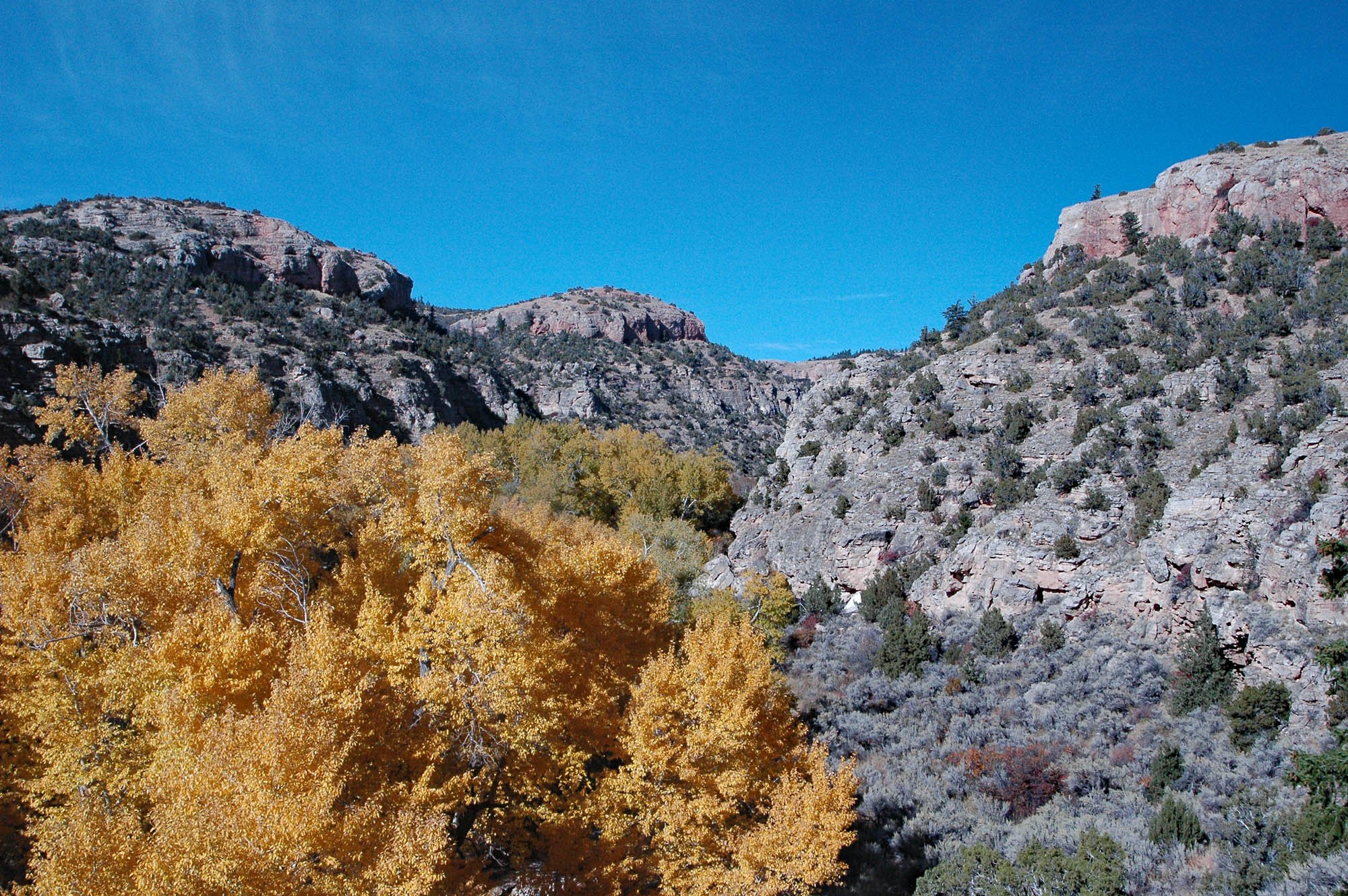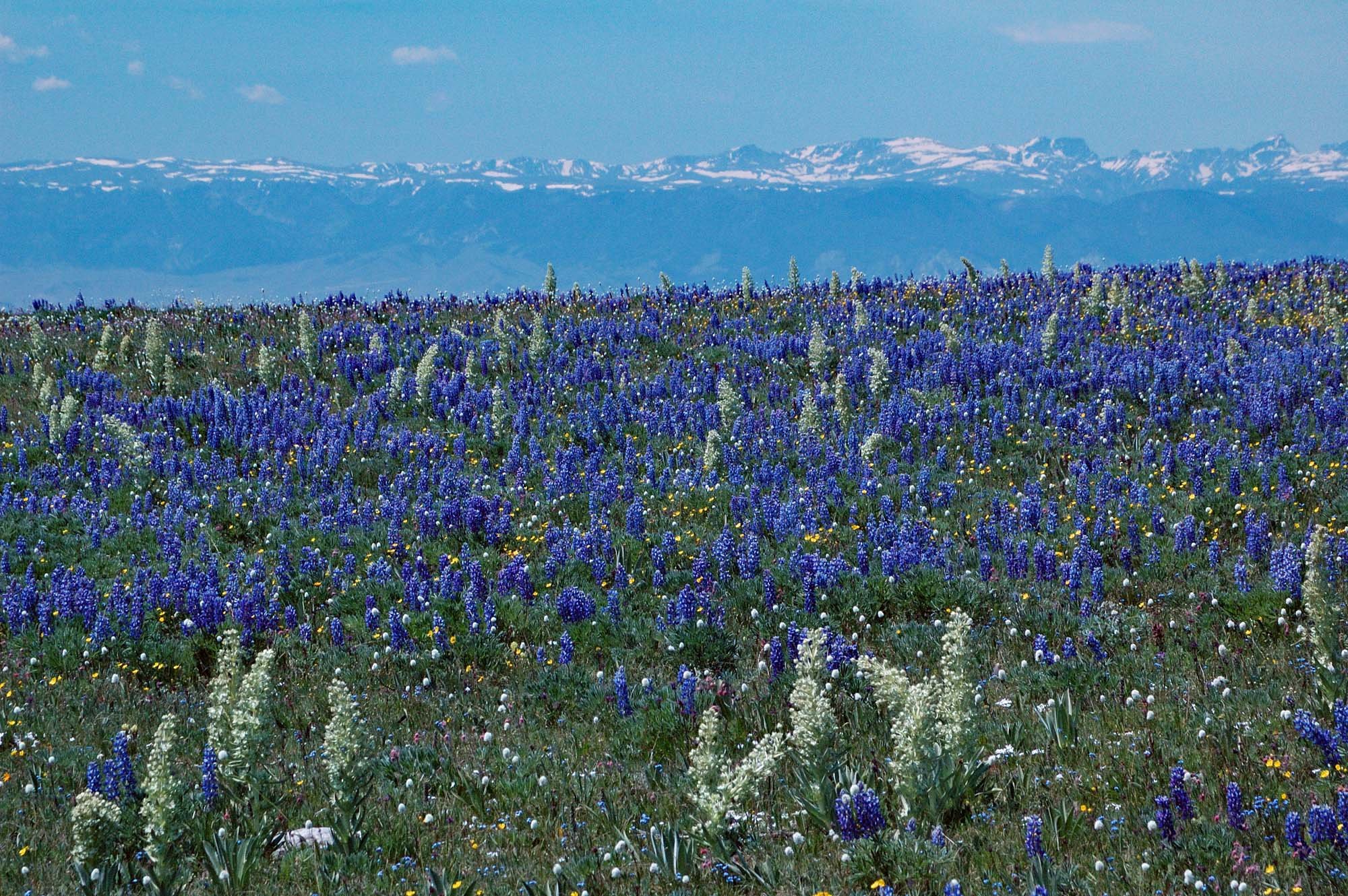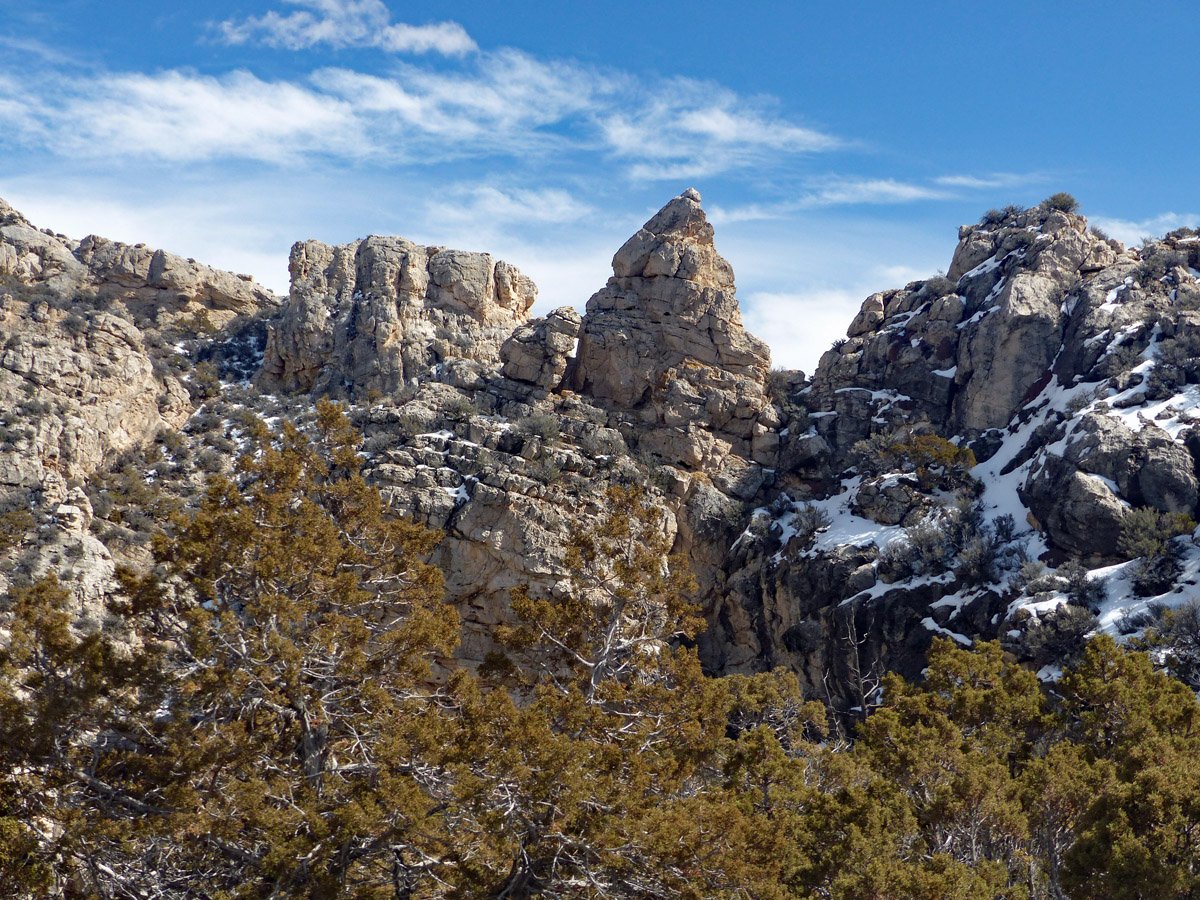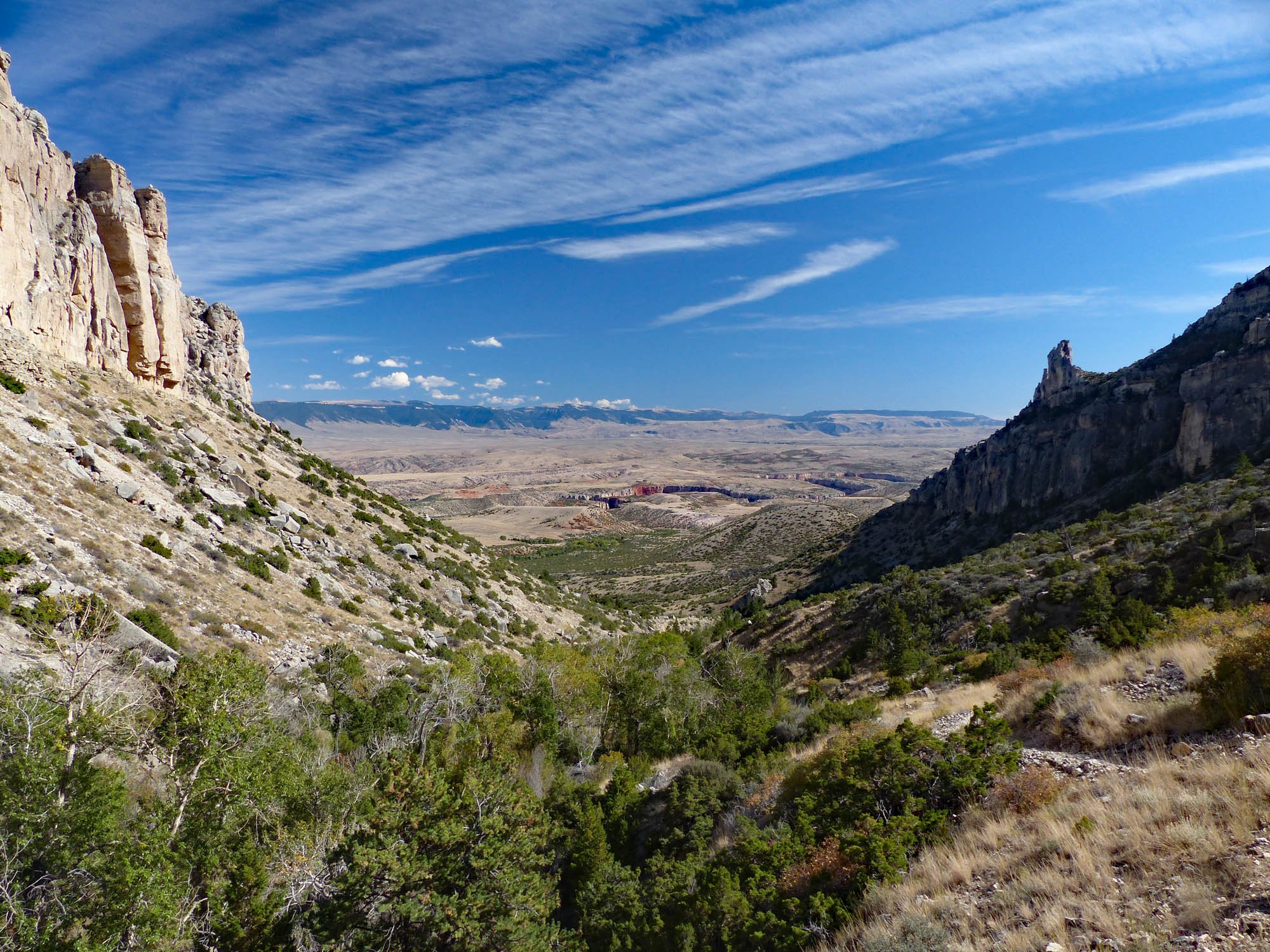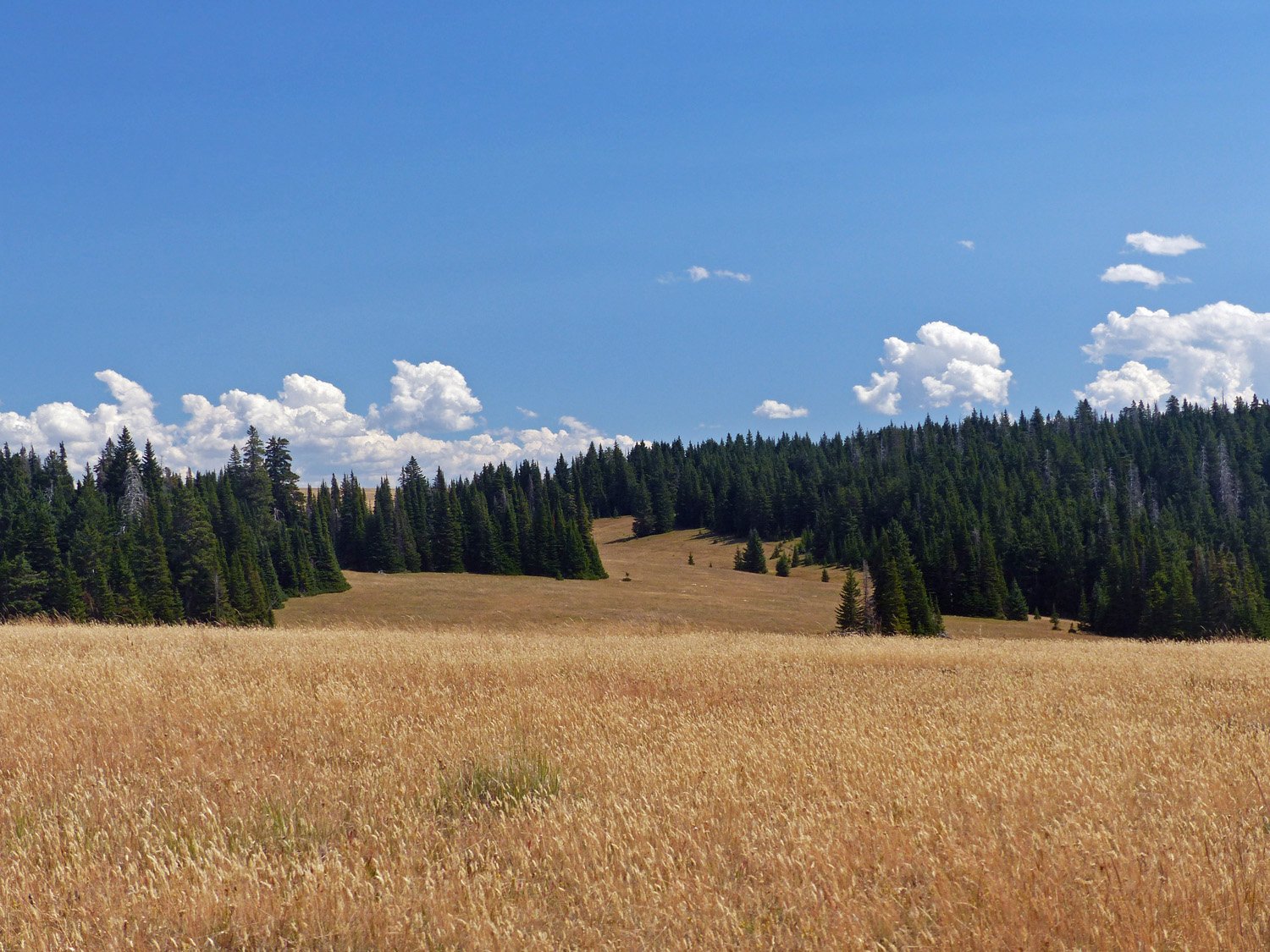Opportunities for Designated Wilderness Areas in the Pryors
Other pages of this website provide evidence for the many important values of the Pryor Mountains that merit preservation by designation as Wilderness.
The six Wilderness Areas we propose in the Pryors include a huge diversity of landscapes and ecosystems. They are very different from each other - and unrepresented in the National Wilderness Preservation System.
The slideshow demonstrates the landscape diversity. All photos are of areas qualifying for Wilderness Designation.
Wilderness and/or Recreation ?
“While recreation was always meant to be a part of Wilderness, elevating it to an all-consuming priority will trammel the natural world.”
“As Howard Zahniser, author of the Wilderness Act, said, ‘The purpose of the Wilderness Act is to preserve the wilderness character of the areas to be included in the wilderness system, not to establish any particular use.’ Wilderness is a priceless place to recreate—it provides us solitude, a chance for reflection, and an opportunity to experience a world we don’t manipulate and control. But, as John Muir once said, ‘Nothing dollarable is safe.’ This includes Wilderness”.
Mason Parker and Katie Bilodeau, Wilderness Watcher, the quarterly newsletter of Wilderness Watch, Vol. 36 | No. 1 | Spring 2025 Read more….
…from the 1964 Wilderness Act:
“A wilderness, in contrast with those areas where man and his own works dominate the landscape, is hereby recognized as an area where the earth and its community of life are untrammeled by man, where man himself is a visitor who does not remain. An area of wilderness is further defined to mean in this Act an area of undeveloped Federal land retaining its primeval character and influence, without permanent improvements or human habitation, which is protected and managed so as to preserve its natural conditions …” from the 1964 Wilderness Act
Currently there are no designated Wilderness Areas in the Pryors. Formal designation of Wilderness Areas requires Congressional action. According to the 1964 Wilderness Act to qualify for Wilderness designation areas must be “an area of undeveloped Federal land… which:
(1) generally appears to have been affected primarily by the forces of nature, with the imprint of man’s work substantially unnoticeable;
(2) has outstanding opportunities for solitude or a primitive and unconfined type of recreation;
(3) has at least five thousand acres of land or is of sufficient size as to make practicable its preservation and use in an unimpaired condition; and
(4) may also contain ecological, geological, or other features of scientific, educational, scenic, or historical value.”
There are also no Congressionally designated Wilderness Study Areas (WSAs) in the Pryors. But there are significant areas in the Pryors, totaling over 59,000 acres, that have been designated by the three managing agencies (FS, BLM and BCNRA) as qualifying for Wilderness designation. Current policy is to manage them to preserve their wilderness character. These areas are variously labeled (depending on different agency jargon) as Recommended Wilderness Areas (RWAs), Wilderness Study Areas (WSAs), or Lands with Wilderness Characteristics (LWCs)
.The Forest Service has acknowledged that two more areas totaling 18,700 acres also qualify for Wilderness designation. But Custer Gallatin National Forest recently chose not to recommend these two areas for Wilderness designation. Instead they call them “Backcountry Areas” (BCAs). We strongly disagree with that decision, and hope it will be revised. The “Backcountry Area” label suggests a focus on human recreation, rather than a focus on landscape/ecosystem preservation. As a management category, “Backcountry Area” is a new and ill-defined concept. An additional 10,300 acres in the Pryors also qualify for Wilderness designation.
A grand total of 88,000 acres (in six units) qualify for Wilderness designation. We believe all should all be protected as Congressional designation Wilderness Areas. (See Map below.)
Of the various possible designations of federally managed public land, Wilderness designation is the “gold standard” for long-term preservation of treasured and unique landscapes and ecosystems. Lesser designations (including RWAs, WSAs, LWCs and “backcountry areas”…) are considerably weaker and too easily changed.
There are approximately 250 miles of roads in the Pryors designated by BLM and FS as open to public motorized use. We consider this excessive - with many redundant 4WD routes unneeded for generous public motorized access. (By comparison BLM and FS have designated only a dozen miles of foot-trails in the Pryors, some of which are not implemented with trail signs etc.)
Despite the 250 miles of motor vehicle roads, the six roadless areas, totaling more than 88,000 acres, are essentially roadless. These areas can be designated as Wilderness Areas leaving the existing Pryors roads open for motorized access. (Exception: All or parts of two or three dead-end, motor-legal routes totaling ten miles or less would best be converted to foot-travel only to improve the solitude of the Wilderness Areas.) The abundant 4WD routes loop around and between the six Wilderness Areas providing access to a wide variety of landscapes and viewpoints.
The 59,000 acres already identified by the managing agencies for Wilderness designation constitute two-thirds of the Wilderness-eligible 88,000 acres ! We call these areas Wilderness Waiting for Congressional Designation (WWCDs), and hope the wait will not be long.
The additional 18,700 acres with acknowledged wilderness quality by the FS, but undervalued as “backcountry areas,” constitute another 21% of the 89,000 acres of Pryor Mountain wilderness and should also be Congressionally designated as such.
Map of the six potential Pryor Mountain Wilderness Areas
In addition to formal Congressional Wilderness designation, the Pryors could be designated as a National Monument. (See more.)
Data below itemizes the acres in various areas and categories.
Sykes Ridge Wilderness: BLM: 2,689 (WSA) + 3,016 (LWC) + BNCRA: 7,795 (RWA)
= 13,680 Acres
East Pryor Wilderness: BLM: 15,590 (WSA) + 2,410 (LWC) + FS: 1,000**
= 19,000 Acres
Lost Water / Burnt Timber /Penney Peak Wilderness:
BLM: 3,516 (WSA) + 6,078 + FS: 7,693 (RWA) + ~ 5,000**
= ~ 22,287 Acres
Bear Canyon Wilderness: FS: 10,366 + BLM 1,800**
= 12,166 Acres
Big Pryor Wilderness: FS: 12,610 Acres (“BCA”)
= 12,610 Acres
Punch Bowl Wilderness: FS: 6,097 (“BCA”) + ~ 2,500**
~ 8,600 Acres
59,333 Acres (WWCDs) + 18,707 (BCAs) + 10,300**
Grand Total = 88,340 Acres
WWCDs (RWAs, WSAs, LWCs): Management Agency (BLM, FS, BCNRA) designated as “Recommended Wilderness Area” or equivalent.
BCAs (“Backcountry Areas): FS identified as Wilderness quality, but not “recommended” as RWA in Forest Management Plan.
** Other areas that we believe qualify for Wilderness designation by 1964 Wilderness Act standards. (Some very obviously do.)
